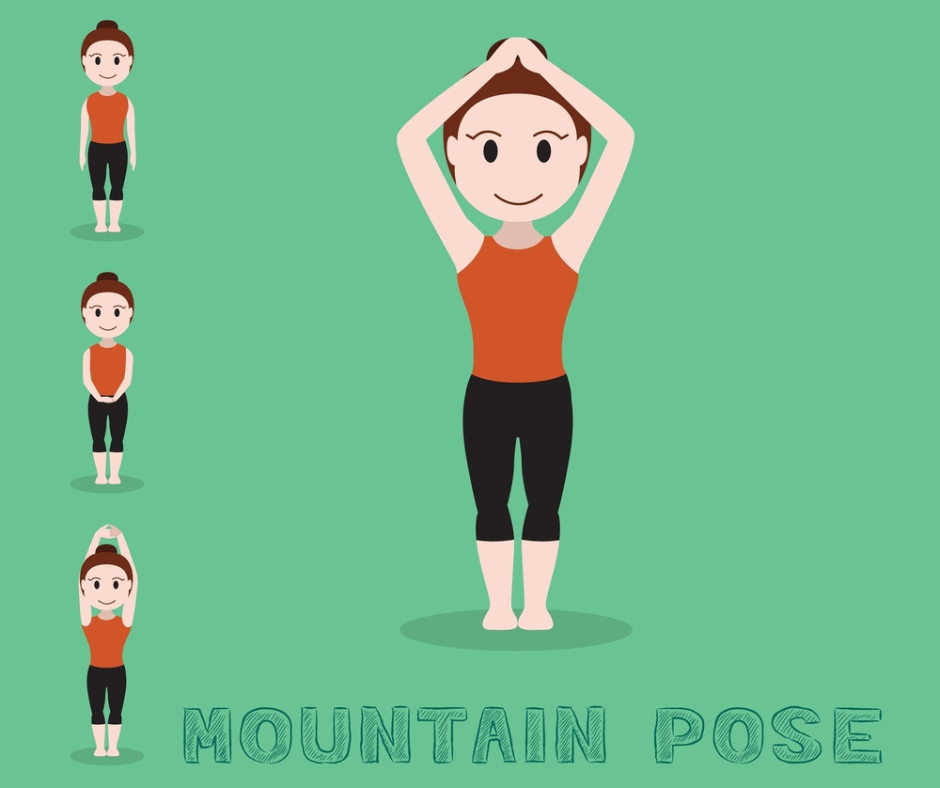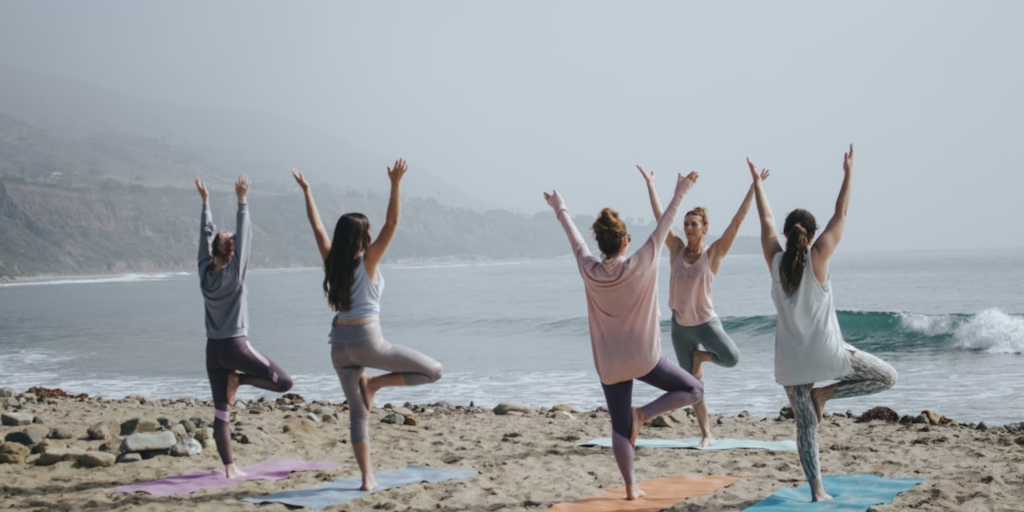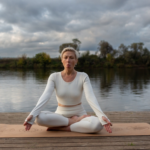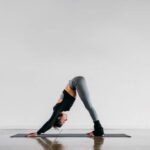Sneak Peak
” Hatha Yoga Poses” Are you new to yoga and eager to start? This guide is perfect for you! Discover 8 powerful Hatha Yoga poses that are great for beginners. Hatha Yoga helps you to stretch, strengthen, and relax your body and mind. Learn how to improve your balance, focus, and inner peace. You can do so with easy poses. Some include Mountain Pose and Tree Pose. You’ll also find tips on safe practice and the benefits of regular yoga. Dive into the world of Hatha Yoga and start feeling amazing today! For more wellness tips, check out NaturalOPD’s holistic therapies webpage.
Introduction
Starting yoga can be exciting and scary. This is especially true for beginners. In this guide, we’ll explore 8 powerful Hatha yoga poses. These are for individuals who are beginning their yoga practice. People know practitioners of Hatha yoga for focusing on poses. It’s also focuses on breathing and meditation. It offers a gentle yet powerful way to improve flexibility, strength, and well-being. These poses are for beginners. They’ll help you build a strong base, boost body awareness, and find inner peace. You may want to de-stress, increase your energy, or boost your fitness. Practicing these poses often can bring many benefits. Get ready to dive into Hatha yoga. Discover the power of these basic poses.
Hatha Yoga Poses for Beginners
Hatha yoga is a popular branch of yoga. It focuses on physical postures, breathing, and meditation. It’s a great starting point for beginners due to its gentle and slow-paced nature. Here are some key Hatha yoga poses that are perfect for beginners.

1. Mountain Pose (Tadasana):
This foundational pose helps improve posture, balance, and focus. Stand tall with your feet together. Ground through all four corners of your feet. Reach the crown of your head towards the sky. Use your thigh muscles. Lengthen your tailbone towards the floor. Relax your shoulders down and back. Mountain Pose strengthens the legs and core. It also promotes a sense of grounding and stability.

2. Tree Pose (Vrikshasana):
This balancing pose is great for improving concentration and stability. Stand on one leg. Press the sole of the other foot against the inner thigh or calf. Keep your hands in prayer position at the heart. Focus your gaze on a fixed point to help with balance. Tree Pose improves physical balance. It’s also builds mental focus and calmness.

3. Sun Salutation (Surya Namaskar):
A flowing sequence of poses that warms up the body and helps improve flexibility. It has a series of forward bends, backbends, and lunges. They coordinate with the breath. Sun Salutation is a complete practice. It’s a holistic approach to stretching, strengthening, and energizing the body. Each movement in the sequence is linked with a breath. This promotes mindfulness and body awareness.

4. Downward Facing Dog (Adho Mukha Svanasana):
This pose is great for stretching the whole body. It focuses on the back, hamstrings, and shoulders. Start on your hands and knees, lift your hips up and back, forming an inverted V shape with your body. Press your hands into the mat, lengthen your spine, and draw your navel towards your spine. Downward Facing Dog stretches and relaxes muscles. It’s also calms the mind and relieves stress.

5. Child’s Pose:
In Child’s Pose, stretch out your body and take ample opportunity to relax and focus on your breathing. For this pose, your knees should be as far apart as your mat would allow. Also, your body should be on the floor. Draw your left leg and right leg together. Then, move into your feet with your hips. Being the most calming of all yoga poses, this one stretches the hips, thighs, ankles, and spine.

6. Cat/Cow:
Start by getting down on your hands and knees or assuming the tabletop posture. As you breathe in, arch your back. Do this by bringing your chest forward and lowering your belly button. Bring your navel in by pressing down with your palms on the ensuing breath. This pose targets the chest and abs. It also strengthens the spine and shoulders.

7. Standing Forward Fold:
Raise your hips while exhaling, and point your left toes and right toes down towards the floor. Stretch your back while lowering yourself to the floor with your hands and feet. This pose combines stretching the back, shoulders, hamstrings, and calves. It also strengthens the arms and legs. Kneel down and grab the elbows on the opposing sides to achieve a more restorative variation.

8. Chair Pose:
Place your left foot and right foot just further than hip-width apart while maintaining a tall, straight posture. Lift your arms toward your ears, exhaling as you do so. Hold your thighs and knees straight while you flex your knees, exhaling as you do so. Maintain for 30 to 1 minute, leaning your foot forward until your body and thighs make a straight angle. It is commonly a standing yoga pose that stimulates the entire body, especially the thighs and pelvic floor.
These poses are a few examples. Many Hatha yoga poses are beneficial and available for beginners. Adding these poses to your practice can help you gain strength. They will also help you gain flexibility and mindfulness. Remember to move. Honor your body’s limits and breathe during your practice. This is how you get the full benefits of Hatha yoga. Hatha Yoga Poses
Traditional vs. Modern Hatha Yoga Practices
Hatha Yoga is centuries old. It has evolved over time and has led to both traditional and modern styles. Distinguishing them can show the essence of Hatha Yoga. It’s also shown how it’s practiced today.
Distinguishing Traditional Hatha Yoga Practices:
- Traditional Hatha Yoga focuses on the original teachings and practices. Ancient texts contain these. Examples are the Hatha Yoga Pradipika and the Gheranda Samhita. It focuses on physical postures (asanas), breathing techniques (pranayama), and meditation. They aim to bring balance and alignment to the body and mind. The traditional approach to Hatha Yoga is slower. It lets practitioners focus on each posture and breath. This fosters a meditative state throughout the session.
Contrasting with modern yoga styles:
- Modern Hatha Yoga has seen many changes. It has fused with other yoga styles and fitness trends. It is still rooted in the principles of Hatha Yoga. But, modern practices may add elements from Vinyasa, Power Yoga, or even Pilates. They do this to cater to diverse preferences and fitness goals. Modern Hatha Yoga classes may include dynamic sequences. They have music and new takes on traditional poses. They offer a more engaging experience. It’s for practitioners who want a mix of tradition and innovation.
Incorporating breathing techniques into Hatha yoga practice.
- One key aspect bridges traditional and modern Hatha Yoga. It’s the emphasis on breathing. Pranayama is the practice of breath control. It plays a vital role in both forms of yoga. It helps with relaxation, energy flow, and concentration during sessions. In traditional Hatha Yoga, pranayama is a standalone component. It has specific techniques. These include Nadi Shodhana (alternate nostril breathing) and Kapalabhati (skull shining breath). Modern Hatha Yoga classes also focus on breath awareness and control. They include pranayama exercises. These exercises enhance the yoga experience and deepen the mind-body connection.
Balancing Tradition and Innovation in Hatha Yoga:
- Yoga’s popularity grows globally. But, the debate between traditionalists and modernists in the yoga community persists. Some practitioners advocate preserving the authenticity of ancient Hatha Yoga. Others embrace the evolution of yoga as a dynamic and adaptive discipline. Practitioners balance tradition and innovation in Hatha Yoga. It can be a personal journey for each one. Their intentions, preferences, and spiritual beliefs guide them. People can explore the many yoga styles available today. They offer unique benefits for the body, mind, and spirit. The simplicity of traditional Hatha Yoga draws people in. Or, they like the creativity of modern interpretations.
By understanding the differences, practitioners can see the diversity in yoga. They can also see the similarities between traditional and modern Hatha Yoga. This knowledge helps them make informed choices that fit their yoga journey.
You May Also Like:
Find Your Perfect Wellness Solutions for a Balanced Life 2024
Benefits of practicing Hatha yoga.

Hatha yoga is a branch of yoga. It focuses on physical postures. Its many benefits are well-known. They help both physical and mental health. Practicing Hatha yoga poses can improve flexibility, strength, and balance. This enhances physical health. Also, Hatha yoga’s meditative aspect reduces stress and anxiety. It promotes mental clarity and relaxation. This yoga is great for busy people. It gives them a space to relax and rejuvenate. It helps lessen the effects of a hectic schedule. Hatha yoga poses also aim to connect to the body’s energy centers. These centers, known as chakras, are energy channels. They promote balance and harmony in the body and mind.
Improved posture and body awareness.
Hatha yoga poses have mental and physical benefits. They also help improve posture and body awareness. Alignment is key in each pose. It’s helpful for people to become mindful of their body’s position. This leads to better posture in yoga and in daily life. This raised body awareness can also prevent injuries and strains. It’s taught practitioners to move more and in a more controlled way.
Enhanced Breathing Techniques
Furthermore, practitioners know Hatha yoga for enhancing breathing techniques. Synchronizing breath with movement in poses increases lung capacity. It’s also promotes deep relaxation. Proper breathing is essential for reducing stress and improving lung function. Hatha yoga is a valuable practice for respiratory health.
Spiritual Growth
Hatha yoga poses have physical and mental benefits. They also affect one’s spiritual journey. Practitioners foster a deeper connection to the self through mindfulness and introspection. This may bring a stronger self-awareness and inner peace. Hatha yoga has a spiritual aspect. It’s able to lead to personal growth, self-discovery, and a greater sense of purpose in life.
Exploring the Eight Limbs of Yoga

Yoga is a holistic practice. It goes beyond the physical postures in modern yoga classes. The Yoga Sutras of Patanjali is a foundational yoga text. It outlines the Eight Limbs of Yoga. They provide a guide for leading a meaningful life. These eight limbs serve as a roadmap for spiritual growth and self-realization.
Understanding the philosophy behind the eight limbs:
The Eight Limbs of Yoga, outlined by Patanjali, start with the Yamas (restraints). Then comes the Niyamas (observances). They form the ethical and moral guidelines for yogis. The practice of Asanas and Pranayama follows these. They help purify the body and mind. The next four limbs are: Pratyahara (withdrawal of the senses). Then, Dharana (concentration), Dhyana (meditation), and Samadhi (absorption). They focus on turning awareness inward and uniting with the divine.
Applying the Eight Limbs to Hatha Yoga Practice:
Hatha Yoga is a popular form of yoga. It emphasizes physical postures and breath control. It’s able to include the principles of the Eight Limbs. The Eight Limbs prescribe ethical guidelines, mindfulness practices, and meditation techniques. By integrating them, practitioners can deepen their yoga practice.
Embracing a holistic approach to yoga:
The Eight Limbs of Yoga offer a holistic approach to living a balanced and harmonious life. By embracing all parts of the Eight Limbs, individuals can build self-awareness. They can also find inner peace and spiritual growth. This yoga system is comprehensive. It gives a framework for uniting the body, mind, and spirit. It leads to a more fulfilling life with purpose.
Also, to the Eight Limbs, yoga philosophy covers other key concepts. These include karma (the law of cause and effect). Also, it’s dharma (one’s duty or righteous path) and seva (selfless service). These principles further guide practitioners. They help them lead a life of integrity, compassion, and self-discovery.
Furthermore, the practice of yoga extends beyond the mat into everyday life. Mindfulness is a core part of yoga. It encourages people to be present in each moment. This fosters a deep connection with oneself and the world. By adding mindfulness to daily routines, individuals can cut stress and improve clarity. They can also boost well-being.
The exploration of the Eight Limbs of Yoga enriches one’s physical practice. It also nurtures the soul, leading to a big change in how we’ve seen ourselves and our place in the universe.
Hatha Yoga for Beginners

Hatha Yoga is a wonderful practice that can benefit both the body and mind. For beginners embarking on their yoga journey, here are some essential tips to keep in mind.
Selecting Hatha Yoga as a starting point:
When starting out with yoga, choosing Hatha Yoga can be a great entry point. Hatha Yoga focuses on the basics of yoga poses and breath control. It’s accessible for beginners. This basic style of yoga builds strength, flexibility, and balance. It also calms the mind through breathing techniques.
Guidance for Practicing Hatha Yoga Poses:
It’s crucial for beginners to practice yoga poses to prevent injuries. Listen to your body. Follow proper alignment cues. Don’t push yourself too hard. Consider taking beginner classes or seeking guidance from a certified yoga instructor. Start with simple poses. These include Mountain Pose, Downward-Facing Dog, and Child’s Pose. Then, move on to more advanced poses.
Building a Consistent Practice Routine:
Consistency is key when it comes to yoga practice. Set aside dedicated time each day for your yoga practice, even it’s for a few minutes. Having a routine will help you progress in your practice. It will let you experience the benefits of Hatha Yoga. Also, consider adding meditation and mindfulness to your routine. They will boost the mental benefits of your practice.
Understanding the principles of Hatha Yoga:
Hatha Yoga is more than physical postures. It includes a whole approach to health and well-being. Learn about the principles of Hatha Yoga. They include the balance between effort and relaxation. They also stress the importance of breath awareness. And the connection of mind, body, and spirit. Understanding these principles will deepen your practice and enhance its transformative effects.
Exploring different Hatha yoga styles:
Hatha Yoga provides a solid foundation. Yet, do not be afraid to explore styles within the Hatha tradition. Try Iyengar Yoga for precise alignment. Try Vinyasa Yoga for a dynamic flow. Or try Restorative Yoga for deep relaxation. Try different styles. They can help you find what works best for your body and goals.
New yogis can build a strong foundation for Hatha Yoga by following these tips. They can enjoy a fulfilling journey towards health and well-being.
Enhancing Mind-Body Connection
In the journey of self-discovery and holistic well-being, the mind-body connection is key. This link is profound. It connects our body and mind. It shows the importance of nurturing both in harmony. Here are some key points to discuss in this regard.
- Hatha Yoga is a traditional form of yoga. It puts a big emphasis on the breath-body connection. In various asanas, practitioners synchronize their breath with movement. This helps them to be more aware of the present moment and to unite their mind and body.
- Embracing Mindfulness in Each Pose. Mindfulness is the act of being present and engaged now. It’s a powerful tool to strengthen the mind-body connection during yoga. Focusing on the sensations, alignment, and breath in each pose helps people. It helps them connect with their bodies and minds.
- Cultivating Inner Balance and Harmony. They can do this by practicing breath awareness, mindfulness, and yoga. This mix of physical, mental, and emotional well-being unites a person . It leads to a more balanced and fulfilling life.
Incorporate these into your yoga routine and daily life. They can improve your mind-body connection. They can promote wellness and start a journey to self-awareness and peace.
Expanding on the mind-body connection. It is key to understand this: our thoughts and emotions affect our health. Stress, anxiety, and negative thinking can cause physical tension. They can also cause discomfort or illness in the body. By thinking and practicing gratitude, individuals can create a peaceful environment. They can do so by doing relaxing and joyful activities. This helps the mind and body to thrive.
Also, holistic practices like meditation can deepen the mind-body connection. Tai chi and qigong can too. They do this by combining movement, breathwork, and mindfulness. These practices enhance flexibility and strength. They also nurture clarity, resilience, and awareness.
In essence, the journey of enhancing the mind-body connection is a continuous exploration. It’s about self-awareness, self-care, and self-compassion. By focusing on habits that nourish the body and mind, people can build a deep sense of well-being. They will also gain resilience and inner peace. These traits will spread into all parts of their lives.
In conclusion
Practicing Hatha Yoga poses can transform beginners. It can enhance their physical and mental well-being. Add these powerful poses to your routine. They can increase flexibility, strength, and inner peace. To explore more wellness options beyond yoga, visit NaturalOPD’s holistic therapies webpage. They cover Traditional Ayurvedic Medicine and Meditation. It’s NaturalOPD. Begin your journey to well-being today!









